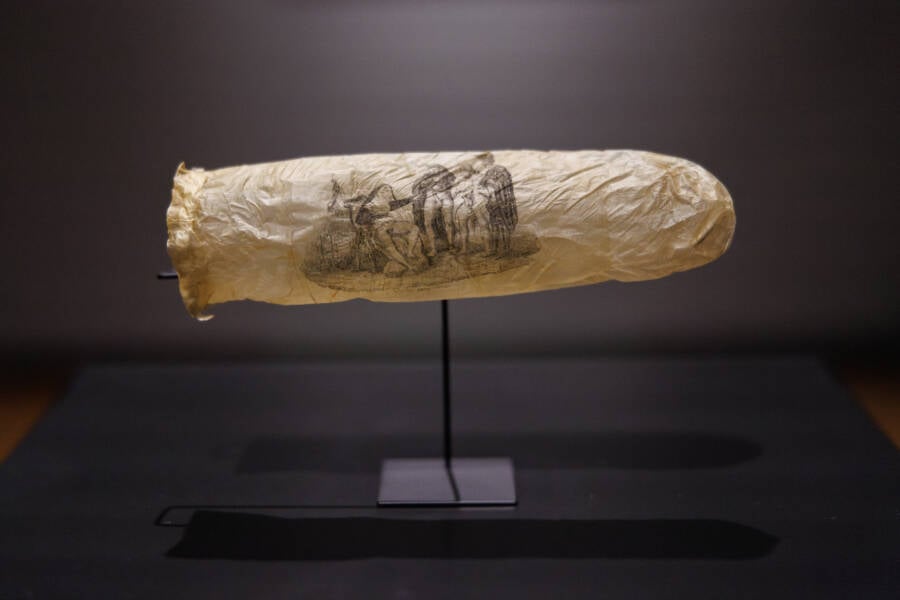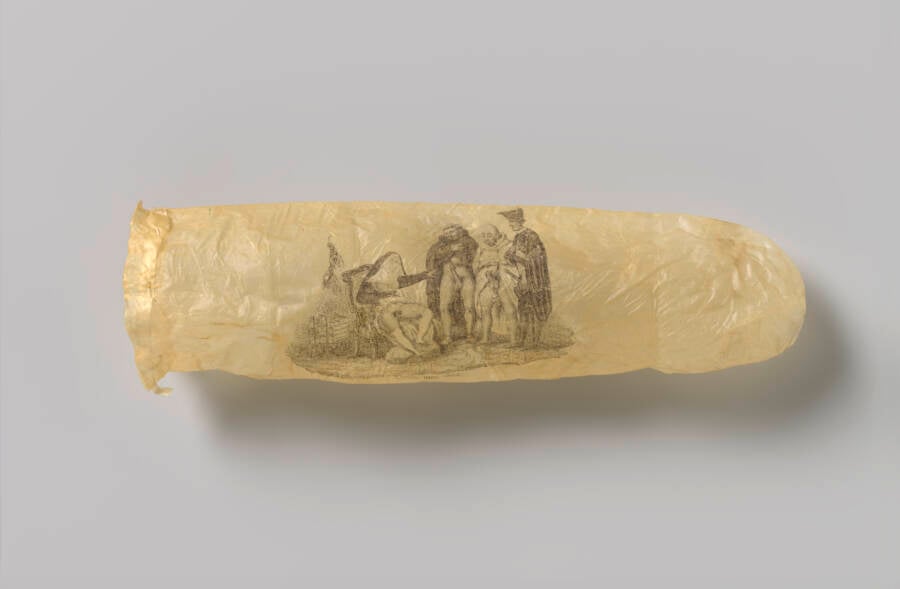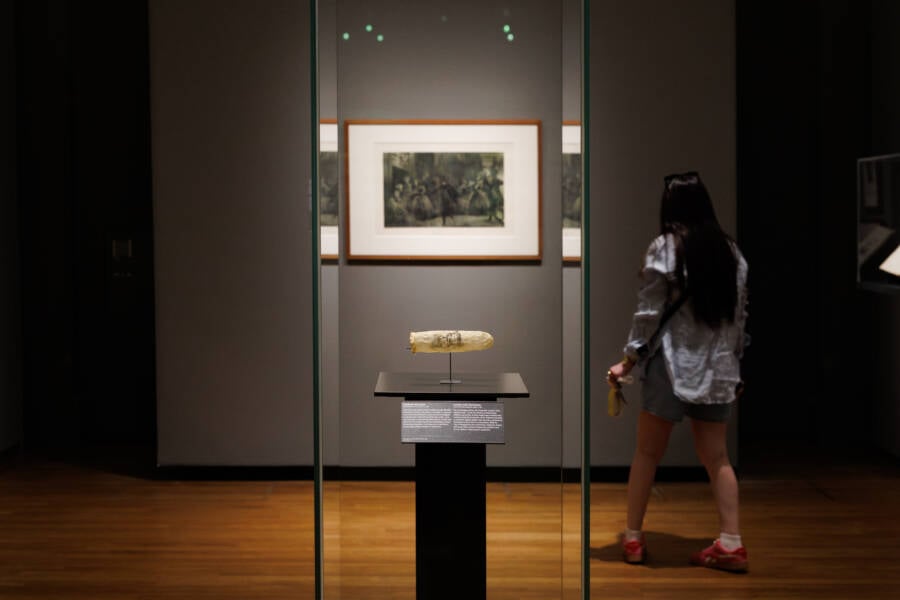The condom is believed to have come from a high-end Parisian brothel and features an erotic drawing in which a nun offers herself to three aroused clergymen.

Kelly Schenk/RijksmuseumCurator Joyce Zelen said of the condom, “We looked at it with UV light and suspect it was never actually used.”
The Rijksmuseum in Amsterdam is now displaying a unique “luxury souvenir” from the 1830s: a condom likely made from a sheep appendix, featuring artwork that depicts a partially undressed nun beckoning three aroused clergymen. Printed below the image is the French phrase “Voilà mon choix,” or “There, that’s my choice.”
This condom, thought to have come from an upscale brothel in Paris, has now become the first contraceptive sheath to join the museum’s collection. It is now the centerpiece of a new exhibition at the museum titled Safe Sex? which focuses on themes of sex work and sexual health.
The Ancient Greek Myth Fittingly Etched Onto The Condom

Kelly Schenk/RijksmuseumThe illustration features a nun seducing three clergymen.
According to Rijksmuseum curator Joyce Zelen, the erotic etching on the condom is a reference to The Judgment of Paris, a classical myth in which the Trojan prince Paris must choose the fairest of three Greek goddesses. Paris is tasked with picking between Hera, Aphrodite, and Athena, ultimately gifting a golden apple to Aphrodite, as she made the most enticing offer to Paris: giving him the most beautiful mortal woman in the world.
That woman happened to be Helen of Sparta, who was then carted off to Troy to wed Paris, despite already being married to the Mycenaean king Menelaus. This cuckolding prompted Greek forces to invade Troy, marking the start of the Trojan War, eventually culminating in the gifting of the Trojan Horse to the city in order to invade and get Helen back.
The art on the condom is, of course, a parody of this myth, and uses sexual innuendo to make a pointed critique about sexuality and morality in 19th-century France.
“In the 1830s, when this condom was made, the use of condoms was still frowned upon, especially by the church,” Zelen explained. “They were mostly sold under the counter at brothels or barber shops, though there are some reports of luxury shops offering bespoke tailoring.”
How Condoms Were Made In Early 19th-Century Europe
Vulcanized rubber was invented in 1839, after which condoms became safer to use and more widespread. Before that, however, the contraceptives were often made of things like linen, animal membranes, or even turtle shells. As one might expect, with modern hindsight, these materials were almost entirely ineffective at preventing either the spread of sexually transmitted diseases or pregnancy.
The museum refers to the condom as a “luxury souvenir,” noting that they “looked at it with UV light and suspect it was never actually used.” More than anything else, the object was both symbolic and an effective method of advertising — it measures just under eight inches in length, likely flattering to the man who originally purchased it.
“It’s also unclear whether the nun in the etching is pointing at the bald man, the thin man, or the one who looks slightly overweight,” Zelen said. “That way, any type of man could feel spoken to.”
How The Condom Fits Into The Rijksmuseum’s Collection

Kelly Schenk/RijksmuseumThe condom will be on display until November 2025.
In November 2024, the Rijksmuseum purchased the condom at an auction in Haarlem for around $1,142 with the support of the F.G. Waller Fund. It is the first example in the museum’s collection of a print on a condom.
“[The condom] represents both the lighter and darker sides of sexual health, in an era when the quest for sexual pleasure was fraught with fears of unwanted pregnancy and sexually transmitted diseases — especially syphilis,” the museum said in a press release.
The illustrated condom now joins a collection of more than 750,000 prints at the Rijksmuseum, the Netherland’s national museum. The Safe Sex? exhibition is currently open and is set to run until the end of November 2025.
After reading about this 19th-century condom, take a look inside the Viktor Wynd Museum of Curiosities, one of the strangest museums on Earth. Then, read all about the history of condoms.





